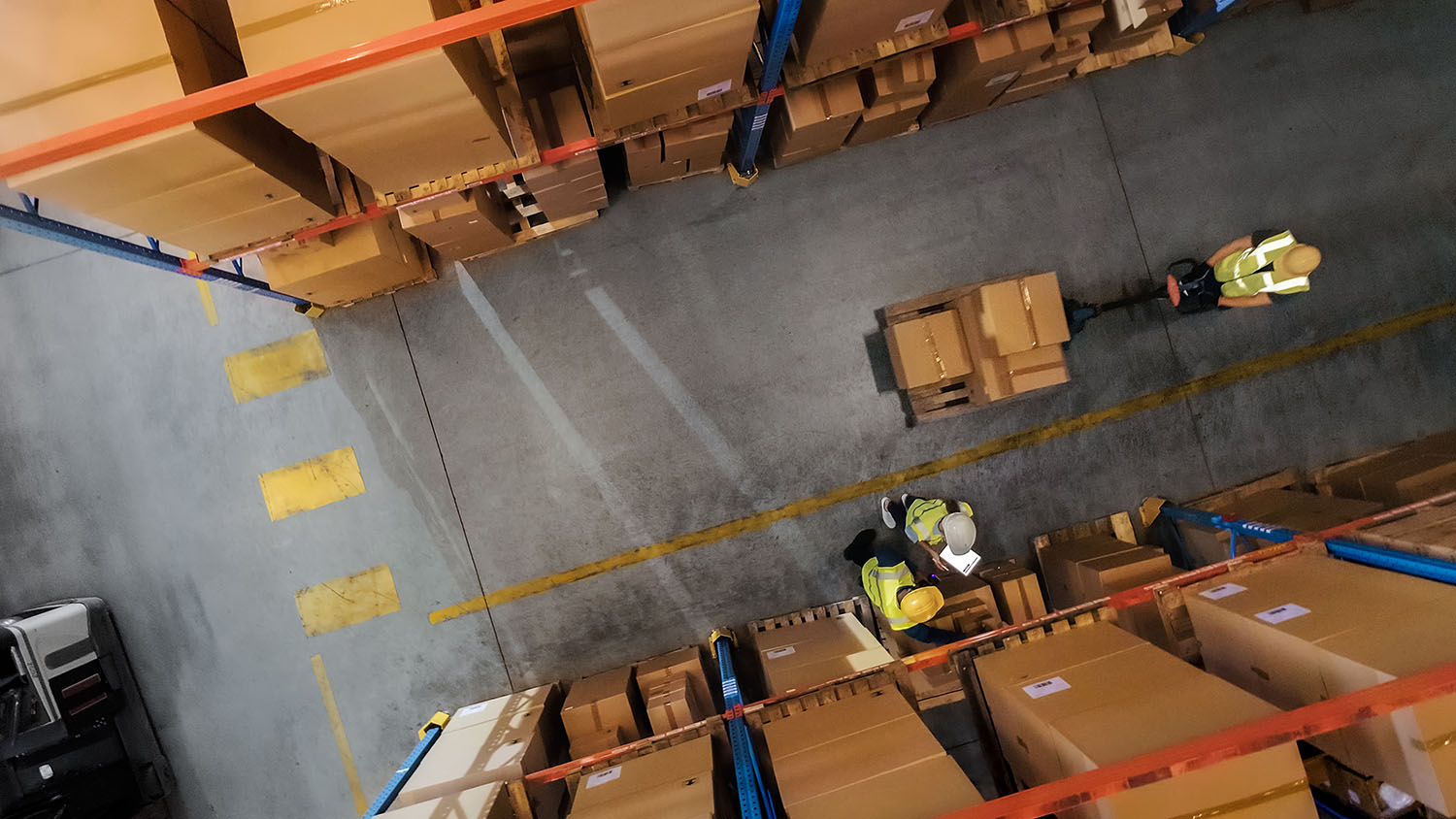Ecommerce demands rapidly change, and a successful business needs to keep up with this, to grow with the industry. Whether you sell beauty products or books, B2C or B2B, your warehouse operations will have a significant impact on your supply chain and business objectives. The best way to create a sophisticated, productive ecommerce warehouse? Implementing a warehouse management system.
What is warehouse management in ecommerce?
Logistics warehouse management is about running, organizing, and optimizing all activities within a business’ warehouse. For ecommerce warehouses, management can more specifically include activities such as:
- Receiving and storing inventory
- Managing inventory storage locations
- Warehouse and inventory audits
- Recording stock levels and inventory reports
- Recording stock availability and inventory turnover
- Reordering and replenishing stock when needed
- Optimizing warehouse workflows for efficiency and accuracy
- Managing staff and ensuring safety and security measures are implemented
What is a warehouse management system?
Warehouse management system (WMS) is a software that allows a business to control, monitor and administer warehouse operations, including processes, inventory tracking, picking, receiving and putaway. By integrating a WMS into your business processes and logistics, you’re able to create streamlined, sophisticated workflows and supply chains.
How a WMS supports ecommerce growth
Productive warehouses
Combine variables like labor, shipping schedules and picking methods to develop a sophisticated workflow with fewer bottlenecks. By optimizing your warehouse functionalities, you can save on time and money usually spent fixing errors and manually entering data.
Meet demand fluctuations
WMS is flexible and can tailor to the varying demand fluctuations of ecommerce. Depending on your product, the customer demands can fluctuate month to month, season to season. As a result of this, a generic workflow might not always suit. A WMS will allow the flexibility to adjust to changing demands, whether it’s an increase in orders or a slower period.
Speed up returns
With transparency, you can approve returns in real-time, including refunds and replacements, as you have visibility of available stock, order history and workflow processes to follow. With efficient returns you ensure improved customer satisfaction.
Automated inventory replenishment
By consolidating all inventory onto your WMS, you can implement automated replenishment so you’re never out of stock. Automation cuts out the risk of human error and frees up time to focus on fulfilling orders.
Fulfill high-volume orders and single product orders
If your warehouse ships out hundreds or thousands of packages every day, you need a parcel labeling system that supports multiple carriers and high volumes. Similarly, if your business needs to manage single-product orders, you will need to trust that order and inventory information is as accurate as possible. A WMS can adjust and scale to suit order type, size and quantity, no matter what size your business is.
Customer satisfaction
By automating certain processes, gaining full visibility of your orders, and streamlining the supply chain you’re set up to deliver goods to your customers accurately and efficiently. Fewer errors and faster turnaround times mean more happy customers!
What to look out for in an ecommerce WMS
ERP integration
To ensure warehouse operations are consolidated with all other areas of your business make sure to choose a WMS with ERP integration.
Training and support
Technical support and training when transitioning to your WMS will ensure your team can take full advantage of the system features.
Scalability
Whatever size business you are, your WMS should have the ability to support you while you grow and expand.
ROI
No matter what software you use there needs to be a clear return on investment to show its value to business objectives.
Real-time data
Accurate, immediate data access allows operators to make informed, confident decisions faster, from updating customer orders through to larger operational changes.
Cloud-based software
A cloud-based WMS offers flexibility, faster implementation and is usually more cost effective as it doesn’t require additional on-site equipment or technology. It also means the newest software updates and features can be automatically integrated.
Research and review your options
It’s important to take the time to research your options as well as audit your business before committing to a WMS. Review your existing software and processes and cross-check them with your warehouse requirements and business objectives. You can then use this information to determine which WMS you’ll need, what integrations you have or don’t have and whether there are additional modules required to optimize your ecommerce supply chain.
Optimize your warehouse for better ecommerce success
By selecting a cloud-based, ERP integrated WMS you can instantly access the features, data and automation to streamline and optimize your warehouse operations and supply chain management.
With Da Vinci’s end-to-end warehouse management, your ecommerce businesses will have the tools and technology needed to create sophisticated, effective supply chains for customer satisfaction and business growth. No matter the size of your business, Da Vinci has a solution for you. Request a demo today.



